Tending to a Rose Garden: Secrets of Success
Are you dreaming of a stunning rose garden that bursts with color and fragrance? If so, you're in the right place! Cultivating roses can be a rewarding and fulfilling endeavor, but it requires a bit of know-how and dedication. In this guide, we'll explore the essential tips and techniques for cultivating a thriving rose garden, including soil preparation, watering, pruning, and pest management. By following these guidelines, you'll ensure your roses bloom beautifully and remain healthy throughout the seasons.
The first step to a successful rose garden is selecting the right varieties. With thousands of rose types available, how do you choose? Consider factors such as your local climate, soil type, and the visual impact you want to achieve. For instance, if you live in a cooler climate, you might want to opt for hardy varieties like Knock Out or Floribunda roses. On the other hand, if you're aiming for a classic look, Hybrid Tea roses might be your best bet. Remember, the right selection will set the stage for a vibrant and harmonious garden.
Healthy roses start with well-prepared soil. Think of your soil as the foundation of a house; if it's not solid, everything else will crumble. To create the perfect foundation for strong root systems and vibrant blooms, you'll need to amend and enrich your soil. This means testing your soil's pH, adding organic matter, and ensuring proper drainage.
Understanding your soil's pH is essential for rose health. Most roses thrive in slightly acidic soil, ideally between 6.0 and 6.8. To test your soil, you can use a simple pH test kit available at garden centers. If your soil is too acidic, you can add lime, while sulfur can help lower the pH if it's too alkaline. Achieving the right pH balance is crucial to the overall health of your roses.
Incorporating organic matter into your soil improves fertility and drainage. Think of it as giving your roses a nutrient-rich meal! Options like compost, well-rotted manure, and even leaf mold can enhance soil quality. Aim to mix in at least 2 to 3 inches of organic matter into your soil before planting. This not only nourishes your roses but also helps retain moisture and improve aeration.
Proper drainage is vital to prevent root rot, which can devastate your rose plants. If you notice water pooling around your plants after rainfall, it’s time to take action. You can improve drainage by creating raised beds, adding coarse sand or perlite to your soil, or installing drainage tiles. Remember, roses love their feet dry, so good drainage is a must!
Watering is a critical aspect of rose care. But how much is too much? Roses typically require about an inch of water per week, either from rainfall or supplemental watering. It's best to water deeply but infrequently, encouraging deep root growth. Consider using a soaker hose or drip irrigation system to deliver water directly to the roots while minimizing evaporation. Just remember, roses prefer their leaves dry, so water early in the morning to prevent fungal diseases.
Pruning is essential for maintaining the health and shape of your rose plants. When done correctly, it can promote growth and enhance blooming. But when is the best time to prune? Generally, early spring, just as new growth begins, is the ideal time. However, this can vary based on your local climate. Always use clean, sharp tools to make clean cuts, and remove any dead or diseased wood to keep your roses thriving.
Different types of pruning serve various purposes. Deadheading, for example, involves removing spent blooms to encourage new growth. Thinning helps improve air circulation, while shaping keeps your roses looking neat and tidy. Understanding these techniques will enhance the overall appearance and health of your roses.
Using the right tools makes pruning easier and more effective. Essential pruning tools include sharp pruning shears, loppers for thicker branches, and a pruning saw for larger stems. Each tool has its purpose, and familiarizing yourself with their proper usage will yield optimal results. Remember, a well-pruned rose is a happy rose!
Preventing and managing pests and diseases is crucial for a successful rose garden. Common threats include aphids, spider mites, and diseases like black spot. The key to keeping your roses healthy is early detection. Regularly inspect your plants for any signs of trouble, and act quickly to address issues. Consider using natural pest control methods to protect your roses without harmful chemicals.
Recognizing common pests is the first step in effective management. Aphids, for instance, are tiny green or black insects that suck the sap from your roses, while spider mites leave a fine webbing. Understanding their impact on plant health will help you take timely action to protect your garden.
Explore natural and organic pest control methods to protect your roses. Introducing beneficial insects like ladybugs can help control aphid populations, while homemade remedies like insecticidal soap can effectively deter pests. By choosing natural methods, you not only safeguard your roses but also contribute to a healthier ecosystem.
Proper fertilization supports healthy growth and vibrant blooms. Different fertilizers serve different purposes, so it’s essential to choose the right one for your roses. Granular fertilizers are great for providing a slow release of nutrients, while liquid fertilizers can give your plants a quick boost. Timing is also key; applying fertilizers in early spring and again after the first bloom will maximize effectiveness.
Understanding the types of fertilizers available is crucial for your rose garden. Granular, liquid, and slow-release options each have their benefits. Granular fertilizers are often easier to apply and provide a steady release of nutrients, while liquid fertilizers can be used for a quick fix. Slow-release fertilizers, as the name suggests, release nutrients over an extended period, making them a convenient choice for busy gardeners.
Timing is key when it comes to fertilizing roses. The best times to apply fertilizers are early spring, just as the roses begin to grow, and again after the first bloom to encourage a second flowering. Always follow the manufacturer’s instructions for application rates, and remember that over-fertilizing can harm your plants more than help them.
Q: How often should I water my roses?
A: Roses typically need about an inch of water per week, either from rainfall or supplemental watering. It's best to water deeply but infrequently.
Q: When is the best time to prune roses?
A: Early spring, just as new growth begins, is generally the best time to prune roses. However, this can vary based on your local climate.
Q: How can I prevent pests in my rose garden?
A: Regularly inspect your plants for signs of pests, and consider introducing beneficial insects or using natural pest control methods to keep your roses healthy.
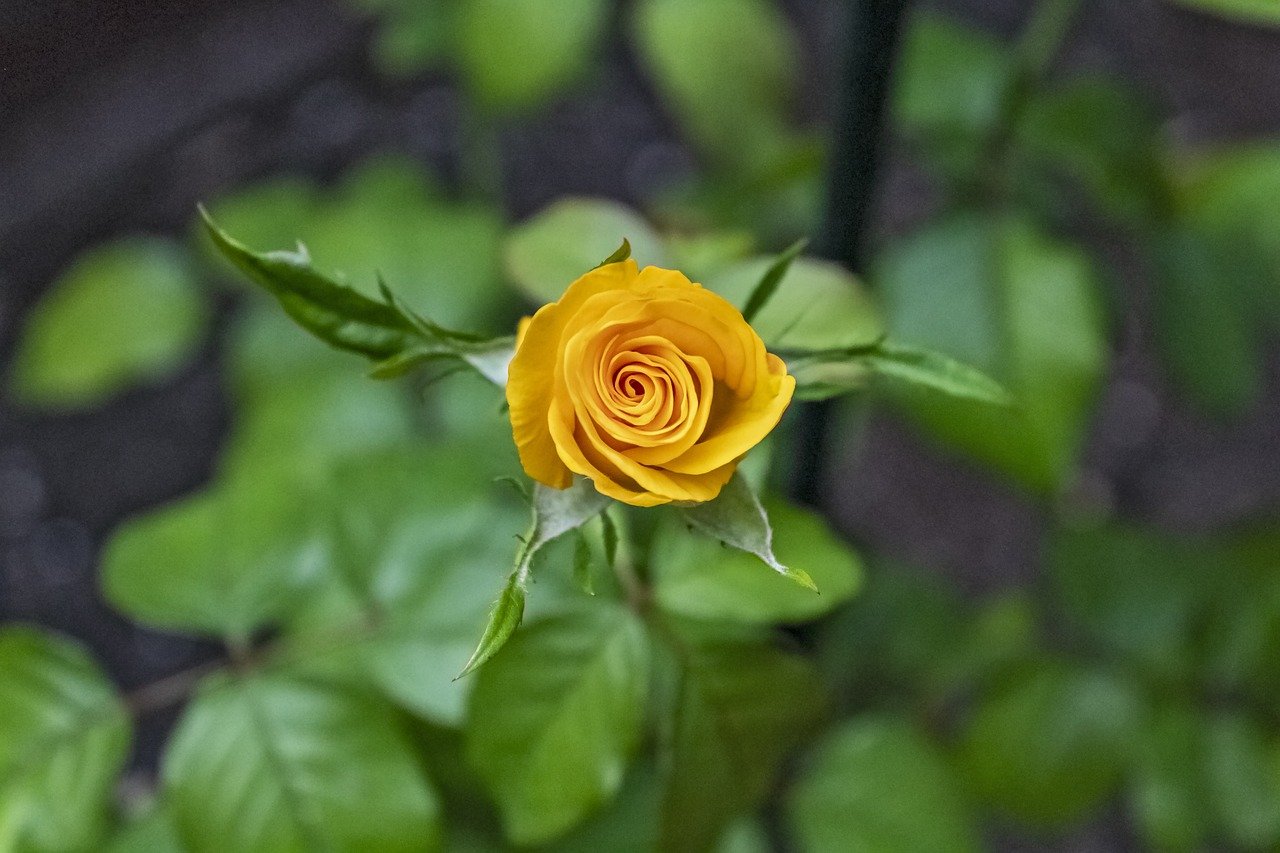
Choosing the Right Roses
When it comes to creating a stunning rose garden, choosing the right rose varieties is like picking the perfect ingredients for a delicious recipe. You wouldn't throw random items into a pot and expect a gourmet meal, right? Similarly, selecting roses that thrive in your specific climate and soil type is essential for achieving that breathtaking bloom you envision. So, let’s dive into the factors that will help you make the best choice.
First off, consider your local climate. Roses are not one-size-fits-all; they have varying tolerances to heat, cold, and humidity. For example, if you live in a warmer area, look for varieties like Knock Out roses, which are known for their resilience and continuous blooming. In contrast, if you're in a cooler region, you might want to opt for hybrid teas or David Austin roses, which can withstand lower temperatures while offering stunning blooms.
Next, think about your soil type. Roses prefer well-drained, rich soil, but not all soils are created equal. Conducting a simple soil test can reveal its composition and pH level, which can significantly influence your rose's health. If your soil is heavy clay or very sandy, you might need to amend it with organic matter to create the ideal environment. This is akin to making a cake: you need the right mix of flour, sugar, and eggs to get that perfect texture.
Another aspect to consider is the desired aesthetics. Are you aiming for a romantic garden filled with soft pastel hues, or do you prefer bold, vibrant colors? Knowing what you want can guide your selection process. For instance, if you want a classic look, consider English roses for their lush blooms and delightful fragrance. On the other hand, if you're after something more modern and striking, floribunda roses can offer clusters of colorful flowers that make a statement.
Lastly, don’t forget about disease resistance. Some rose varieties are more prone to diseases like powdery mildew or black spot. Selecting roses that are bred for disease resistance can save you a lot of headaches down the line. Consider checking out a rose catalog or visiting a local nursery, where you can get expert advice tailored to your specific conditions.
In summary, choosing the right roses involves a blend of understanding your climate, soil type, aesthetic desires, and disease resistance. By taking these factors into account, you can create a rose garden that not only flourishes but also brings joy and beauty to your outdoor space. So, roll up your sleeves, do a little research, and get ready to cultivate a garden that’s the envy of the neighborhood!
- What are the best roses for beginners? Look for hardy varieties like Knock Out or Drift roses, which are low-maintenance and disease-resistant.
- How much sun do roses need? Roses typically require at least 6 hours of direct sunlight each day for optimal growth.
- Can I plant roses in containers? Absolutely! Just ensure the container has good drainage and is large enough for the rose variety you choose.
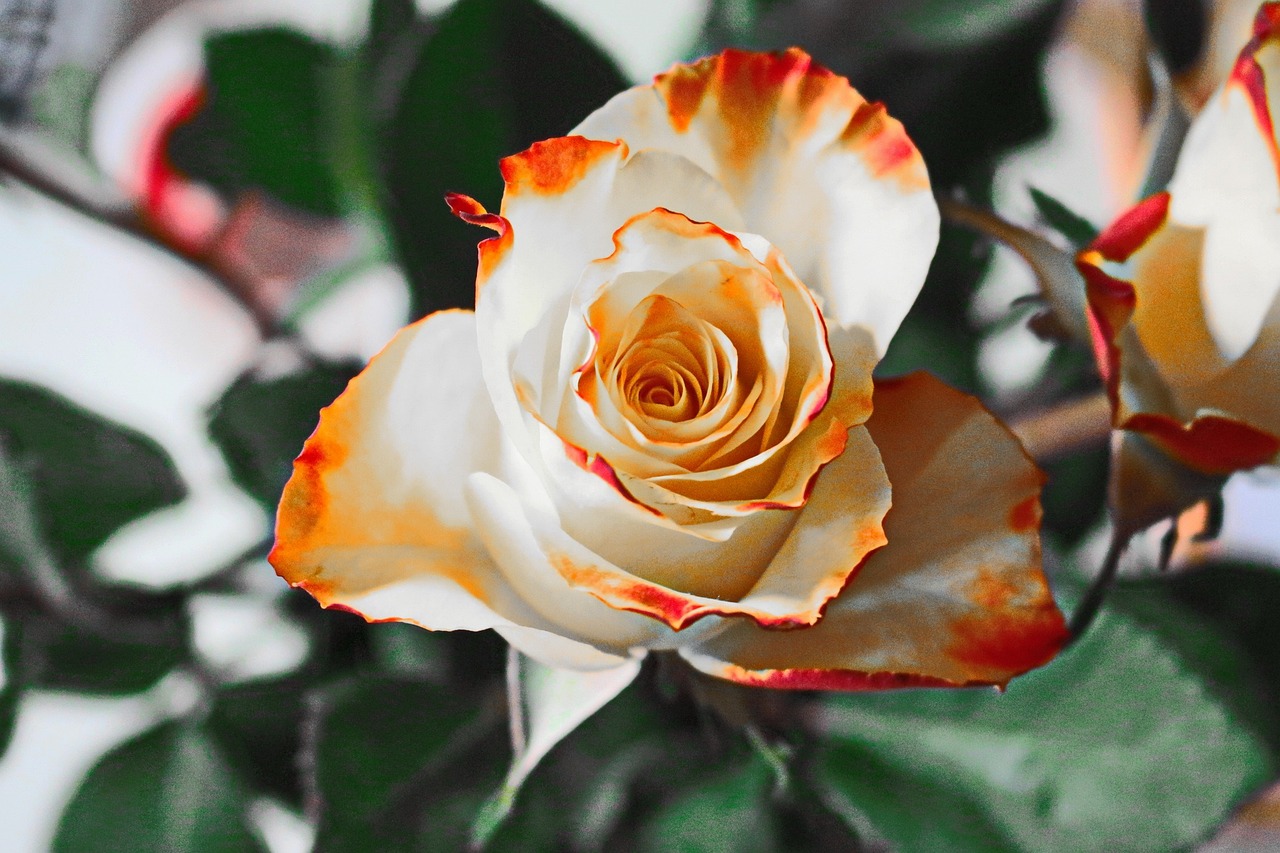
Soil Preparation
When it comes to creating a thriving rose garden, healthy soil is your best friend. Think of soil as the foundation of a house; without a solid base, everything else is at risk. So, how do you prepare your soil to ensure your roses flourish? First, you need to understand that roses crave nutrients and well-drained conditions. Start by assessing your current soil quality. Is it heavy clay, sandy, or loamy? Each type has its own characteristics that can affect how well your roses grow.
To kick off your soil preparation, consider conducting a soil test. This will help you determine the pH level and nutrient content of your soil. Ideally, roses prefer a pH between 6.0 and 6.8. If your soil is too acidic or alkaline, you can make adjustments using lime or sulfur, respectively. Testing your soil is like getting a health check-up for your garden; it gives you the insights you need to make informed decisions.
Understanding your soil's pH is essential for rose health. You can easily test your soil at home using a pH test kit available at garden centers. Simply collect a sample of your soil, mix it with distilled water, and follow the kit instructions. If you find your soil is lacking, don't worry! Amending your soil is straightforward. For instance, if your soil is too acidic, you can add lime to raise the pH. On the other hand, if it's too alkaline, adding sulfur can help lower it. Remember, a balanced pH promotes nutrient availability, which is crucial for strong, vibrant blooms.
Next up is enriching your soil with organic matter. This is where the magic happens! Incorporating materials like compost, well-rotted manure, or leaf mold can significantly enhance soil fertility and structure. Organic matter improves drainage, moisture retention, and provides essential nutrients that roses need to thrive. Aim to mix about 2-3 inches of organic matter into your soil before planting. Think of it as a nutritious meal for your roses, ensuring they have everything they need to grow strong and healthy.
Now, let’s talk about drainage. Roses are notorious for their dislike of soggy roots, which can lead to root rot. To prevent this, you need to ensure your garden has adequate drainage. If you have clay soil that retains water, consider creating raised beds or adding sand and perlite to improve drainage. You can also dig deep holes and backfill them with gravel to create a natural drainage system. This way, your roses can enjoy a well-aerated environment that promotes healthy root development.
Once your soil is prepped and ready, it’s crucial to establish a solid watering routine. Roses prefer deep watering rather than frequent shallow watering. Aim for about 1-2 inches of water per week, depending on the weather. The best time to water is early in the morning, allowing the plants to absorb moisture before the sun gets too hot. Remember, overwatering can be just as harmful as underwatering, so always check the soil moisture before you water. Think of it like giving your roses a drink; you want them to be refreshed, not drowning!
In summary, soil preparation is the cornerstone of a successful rose garden. By testing your soil, adding organic matter, ensuring proper drainage, and establishing a good watering routine, you set the stage for your roses to thrive. So roll up your sleeves, get your hands dirty, and watch your garden bloom like never before!
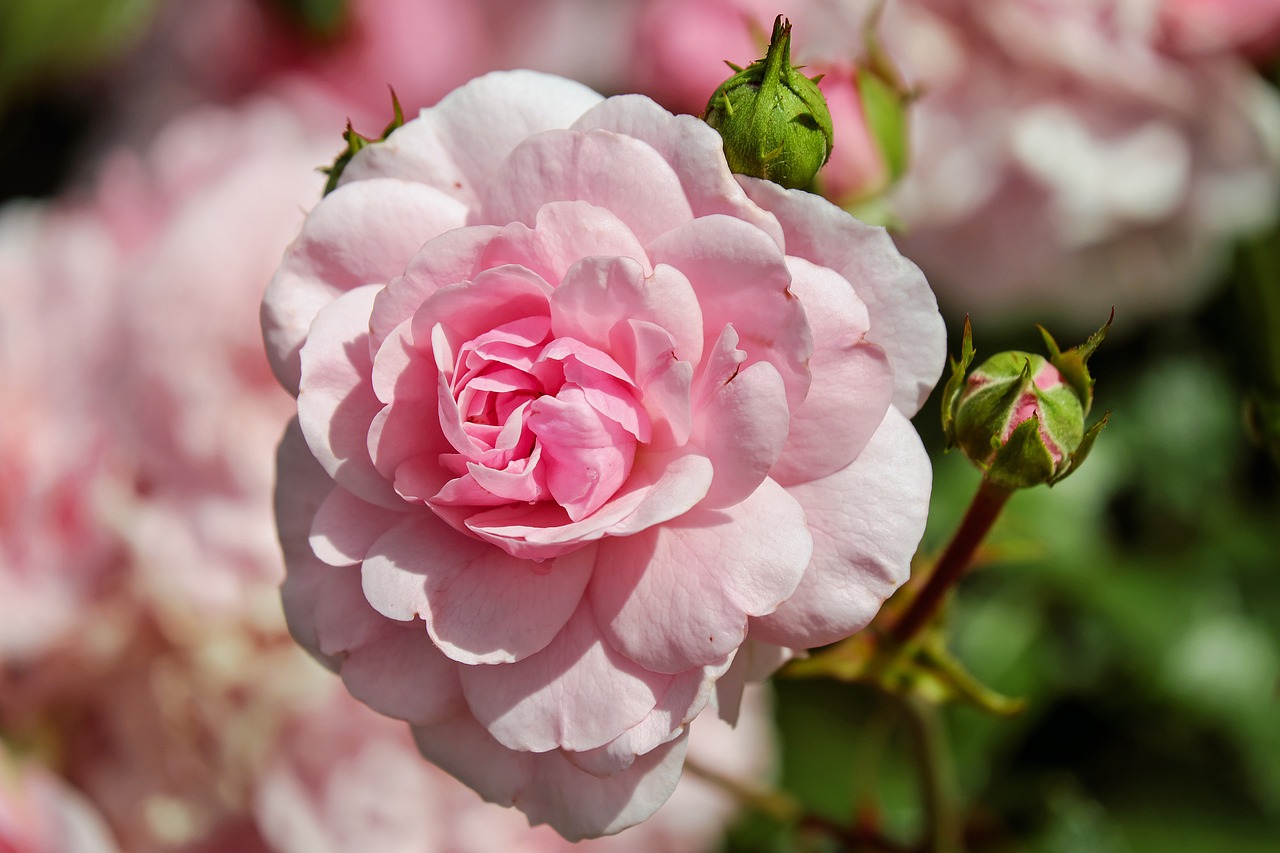
Testing Soil pH
Understanding your soil's pH is an essential step in ensuring the health of your rose garden. The pH level of your soil affects the availability of nutrients, which in turn influences how well your roses grow and bloom. Ideally, roses thrive in slightly acidic to neutral soil, typically with a pH range of 6.0 to 7.0. If the pH is too high or too low, your roses may struggle to absorb the nutrients they need, leading to poor growth and diminished blooms.
To test your soil's pH, you can use a variety of methods. One of the simplest ways is to purchase a pH testing kit from your local garden center. These kits usually come with easy-to-follow instructions and can provide you with a quick reading of your soil's pH level. Alternatively, you can send a soil sample to a laboratory for a more comprehensive analysis. This method not only tells you the pH but also gives insights into nutrient levels and organic matter content.
Once you have your soil pH results, you may find that adjustments are necessary. If your soil is too acidic, you can raise the pH by adding lime, while sulfur can be used to lower it if the soil is too alkaline. Here’s a quick reference table to help you adjust your soil pH:
| Soil pH Level | Adjustment Needed | Recommended Amendment |
|---|---|---|
| Below 6.0 | Increase pH | Lime |
| 6.0 - 7.0 | No adjustment needed | N/A |
| Above 7.0 | Decrease pH | Sulfur |
After making adjustments, it’s vital to retest your soil pH periodically, especially after applying amendments. This way, you can ensure that your roses are growing in an optimal environment. Remember, the health of your roses starts from the ground up, so paying attention to your soil's pH will set the stage for a flourishing garden.
- How often should I test my soil pH? It's a good idea to test your soil pH at least once a year, preferably in the spring before planting.
- Can I use household items to test soil pH? Yes, you can use items like vinegar and baking soda for a rough estimate, but for accurate results, a testing kit is recommended.
- What happens if my soil pH is too low? If your soil pH is too low, your roses may exhibit yellowing leaves and poor growth. Adding lime can help raise the pH.
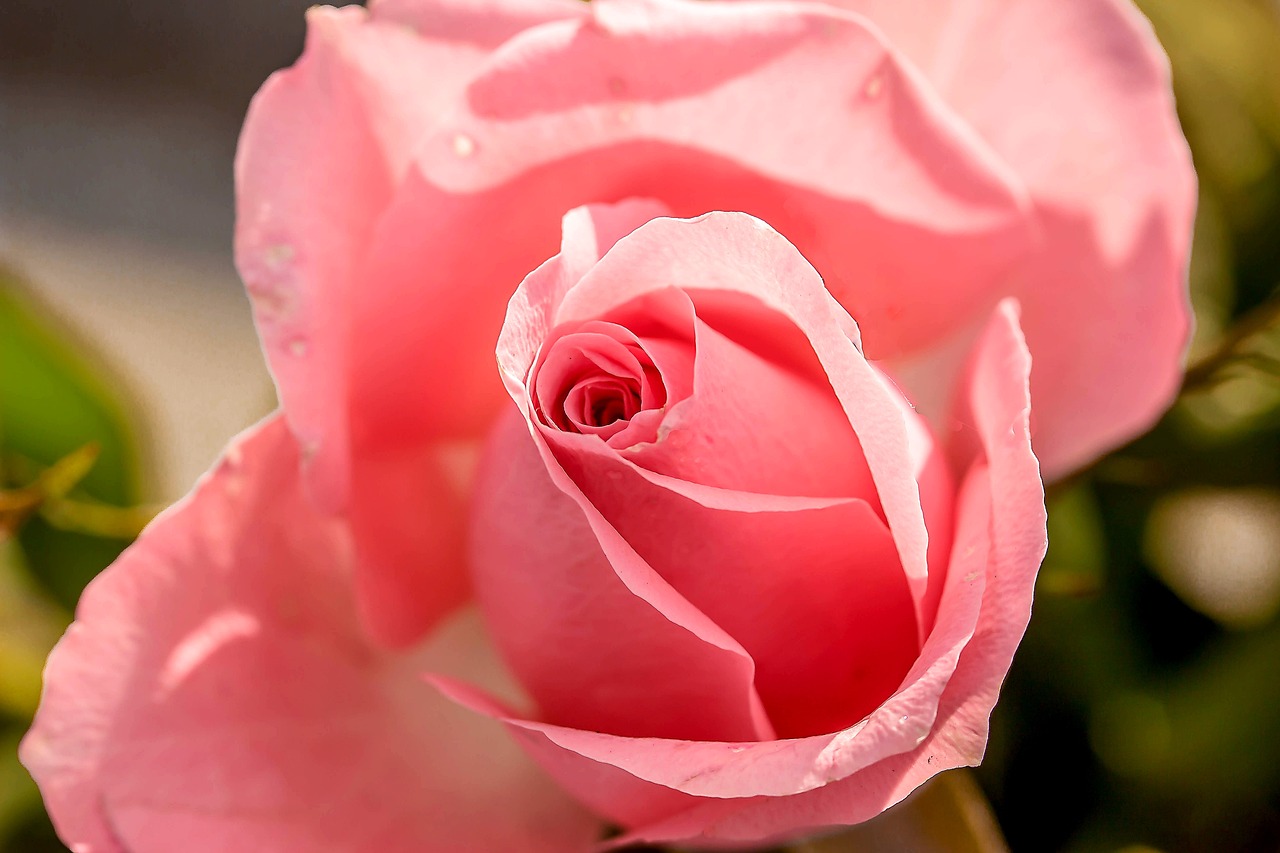
Adding Organic Matter
When it comes to nurturing a flourishing rose garden, to your soil is like giving your plants a hearty meal. Think of organic matter as the secret ingredient that transforms ordinary soil into a nutrient-rich haven for your roses. It not only enhances the soil's fertility but also improves its structure, making it more conducive to healthy root growth. So, what exactly can you add to your soil? Well, there are several fantastic options!
First up, compost is a gardener’s best friend. This dark, crumbly substance is created from decomposed organic materials like kitchen scraps, leaves, and grass clippings. By incorporating compost into your soil, you're not just adding nutrients; you're also boosting its ability to retain moisture and improve drainage. Imagine your soil as a sponge – the more organic matter you add, the better it can soak up water and nutrients!
Another excellent choice is well-rotted manure. This natural fertilizer is rich in nitrogen, phosphorus, and potassium, which are essential for robust plant growth. However, it's crucial to use well-rotted manure to avoid burning your plants. Fresh manure can be too strong and may contain pathogens that could harm your roses. Always remember, patience is key – let that manure age gracefully before introducing it to your garden.
But wait, there’s more! You can also consider leaf mold, which is made from decomposed leaves. This option is particularly valuable because it not only adds nutrients but also helps improve soil structure and moisture retention. If you have a compost pile, throw in those fallen leaves and let nature do its work!
Now, you might be wondering how to incorporate these organic materials into your soil. It's quite simple! Start by spreading a layer of your chosen organic matter over the soil surface, about 2 to 4 inches thick. Then, use a garden fork or tiller to mix it into the top 6 to 12 inches of soil. This process not only enriches your soil but also aerates it, allowing for better water penetration and root development.
In summary, adding organic matter to your rose garden is a game-changer. It creates a thriving environment for your roses, leading to vibrant blooms and robust health. So, roll up your sleeves, gather those organic materials, and watch your roses flourish like never before!
- What types of organic matter are best for roses? Compost, well-rotted manure, and leaf mold are excellent choices for enriching rose garden soil.
- How often should I add organic matter to my soil? Ideally, you should amend your soil with organic matter at least once a year, preferably in the spring or fall.
- Can I use fresh manure in my rose garden? It's best to avoid fresh manure, as it can burn plants and may contain harmful pathogens. Always use well-rotted manure instead.
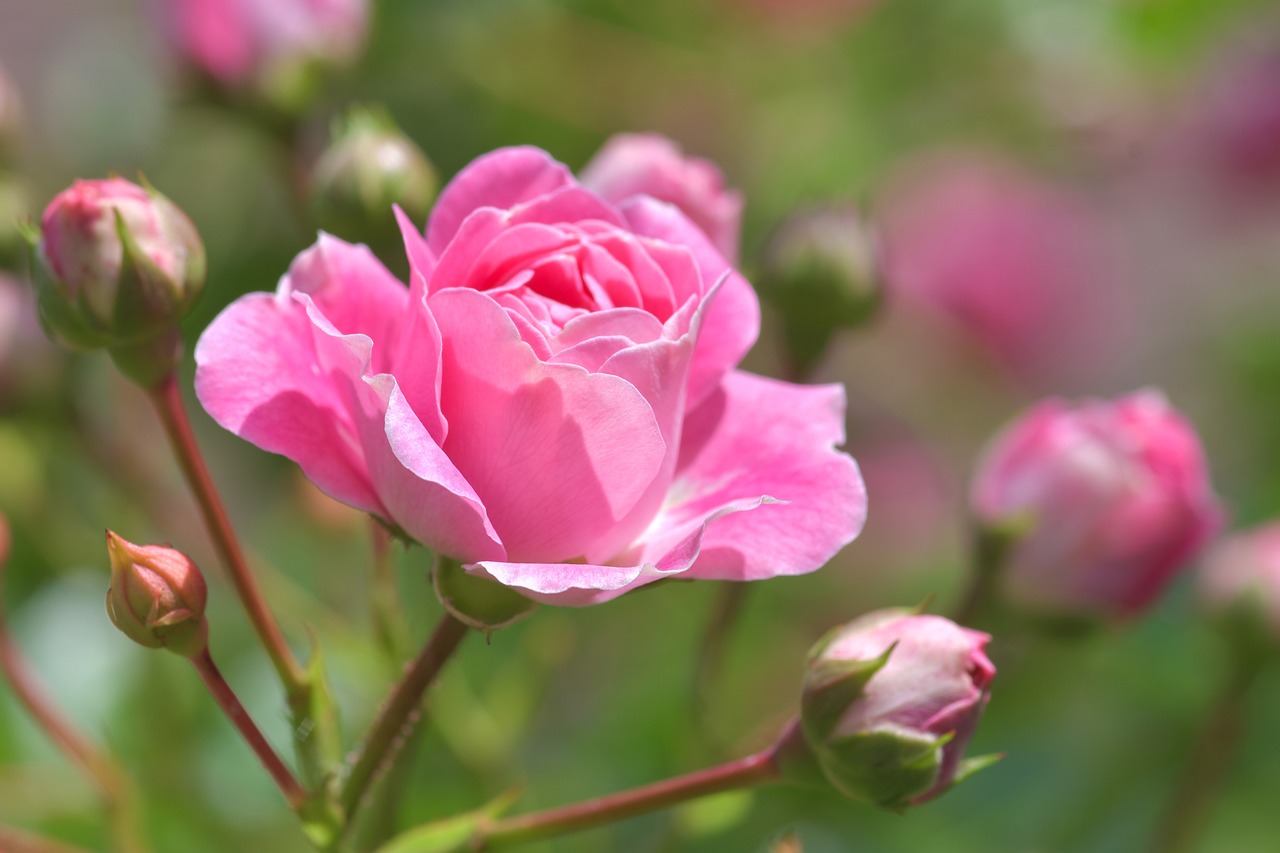
Drainage Solutions
When it comes to cultivating a flourishing rose garden, proper drainage is not just a luxury; it's a necessity. Roses, like most plants, thrive in well-drained soil, and without it, the risk of root rot becomes alarmingly high. Imagine planting your beautiful roses only to see them struggle because their roots are sitting in water! To avoid this heartbreak, let's explore some effective drainage solutions that will ensure your roses are happy and healthy.
First off, consider the type of soil in your garden. Sandy soils typically drain well, while clay soils can retain too much moisture. If your garden has clay soil, you might want to amend it. One of the best ways to improve drainage is by adding organic matter, such as compost or well-rotted manure. This not only enhances the soil structure but also promotes beneficial microbial activity, which is essential for healthy root development.
Another effective solution is to create a raised bed for your roses. By elevating the soil, you allow excess water to drain away more easily. Raised beds also warm up faster in the spring, giving your roses a head start. If you are short on space, consider using containers with drainage holes. This method allows you to control the soil mix and drainage conditions more precisely.
In addition to these methods, you can implement a drainage system in your garden. This could involve installing perforated pipes or French drains to redirect excess water away from your rose plants. If you live in an area prone to heavy rainfall, these systems can be a lifesaver. Here’s a simple overview of drainage solutions:
| Drainage Solution | Description |
|---|---|
| Organic Matter | Add compost or well-rotted manure to improve soil structure and drainage. |
| Raised Beds | Elevate the planting area to facilitate better drainage and soil warmth. |
| Drainage Systems | Install pipes or French drains to manage excess water effectively. |
Lastly, always monitor your roses after heavy rains. If you notice water pooling around the base of your plants, it’s time to take action. You might need to adjust your soil or consider additional drainage solutions. Remember, a little proactive care can make a world of difference in keeping your rose garden thriving and beautiful.
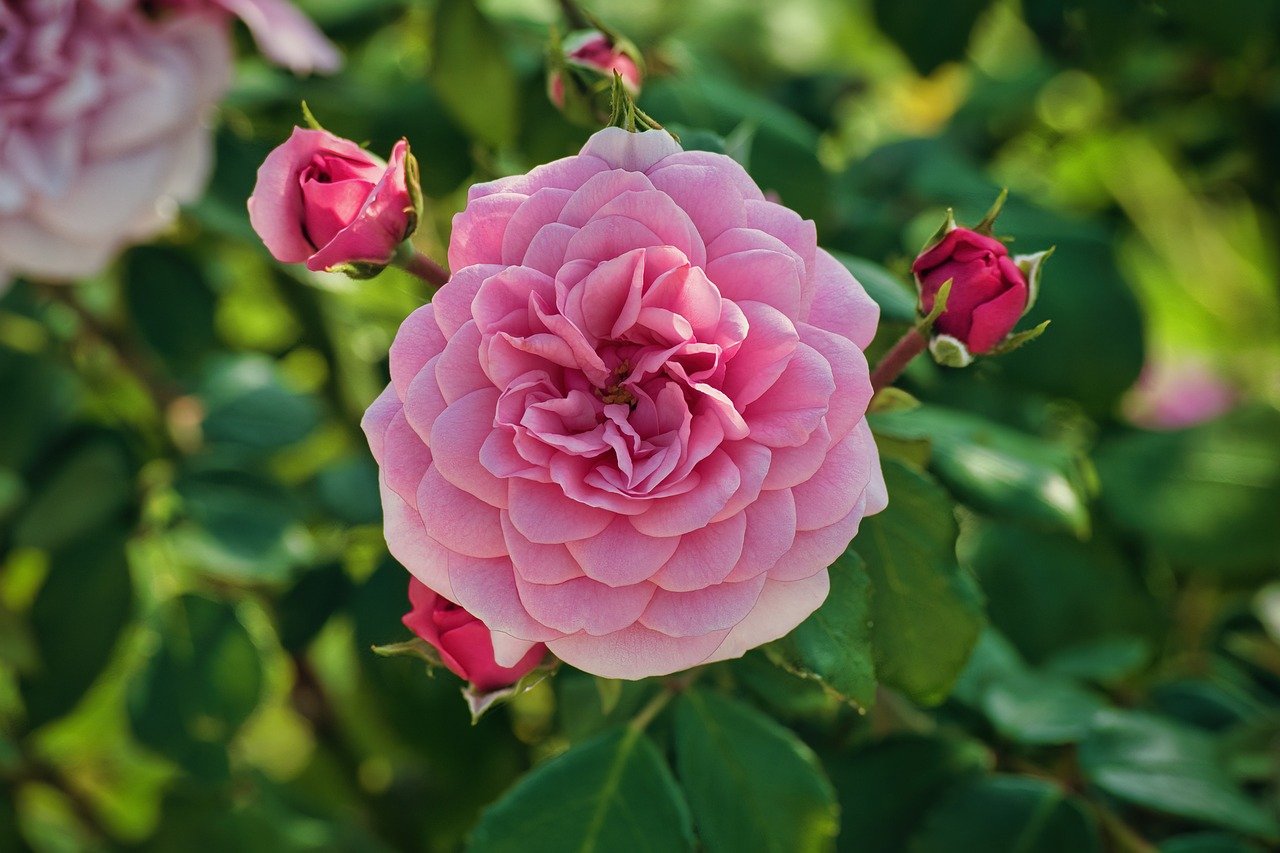
Watering Techniques
When it comes to nurturing your rose garden, watering is one of the most crucial aspects that can make or break your blooming success. Roses, like any living organism, have specific hydration needs that can vary based on several factors, including the type of soil, the climate, and the age of the plants. So, how do you ensure that your roses get just the right amount of moisture? Well, let's dive into some effective watering techniques that will keep your roses thriving and looking their best!
First and foremost, it's important to understand that roses prefer deep, infrequent watering to shallow, frequent watering. This method encourages the roots to grow deeper into the soil, making them more resilient during dry spells. A good rule of thumb is to aim for about 1 to 2 inches of water per week, depending on the weather and soil conditions. During hot, dry spells, you may need to increase this amount. Remember, it’s not just about how much water you give them, but also how you apply it.
One effective technique is to water your roses early in the morning. This timing allows the plants to absorb moisture before the heat of the day sets in, reducing evaporation and ensuring that the water reaches the roots where it's needed most. Additionally, watering in the morning helps to prevent fungal diseases that can occur when leaves stay wet overnight. If mornings aren’t feasible, late afternoons can work as well, but avoid watering in the evening to minimize moisture on the foliage overnight.
When watering, aim to apply the water directly to the base of the plant rather than overhead. This method minimizes the risk of fungal diseases and ensures that the roots receive the moisture directly. You can achieve this by using a soaker hose or a drip irrigation system, which delivers water slowly and deeply to the root zone. If you're using a traditional hose, try to water at the soil level rather than spraying the leaves.
To help you visualize the watering process, here’s a simple table that outlines the best practices:
| Watering Time | Technique | Frequency |
|---|---|---|
| Early Morning | Base watering with a soaker hose | 1-2 times per week |
| Late Afternoon | Base watering with a hose | 1-2 times per week (if necessary) |
Moreover, it's essential to monitor your roses regularly. Check the soil moisture by sticking your finger about an inch into the soil. If it feels dry, it's time to water! This simple test can save you from overwatering, which can lead to root rot—a common issue that can devastate your rose plants.
Lastly, consider using mulch around your roses. A layer of organic mulch not only helps retain soil moisture but also regulates soil temperature and suppresses weeds. This means less competition for water and nutrients, allowing your roses to flourish. Aim for a 2-3 inch layer of mulch, but be sure to keep it a few inches away from the base of the plant to prevent rot.
By implementing these watering techniques, you'll be well on your way to cultivating a stunning rose garden that bursts with color and life. Remember, every rose has its thorn, but with the right care, your roses will bloom beautifully, making your garden a true oasis!
- How often should I water my roses? Aim for about 1 to 2 inches of water per week, adjusting based on weather conditions.
- Is it better to water roses in the morning or evening? Morning is ideal to reduce evaporation and prevent fungal diseases.
- Can I use a spray nozzle to water my roses? It's better to water at the base of the plant to avoid wetting the leaves.
- What type of mulch is best for roses? Organic mulches like wood chips or straw are great options for moisture retention.
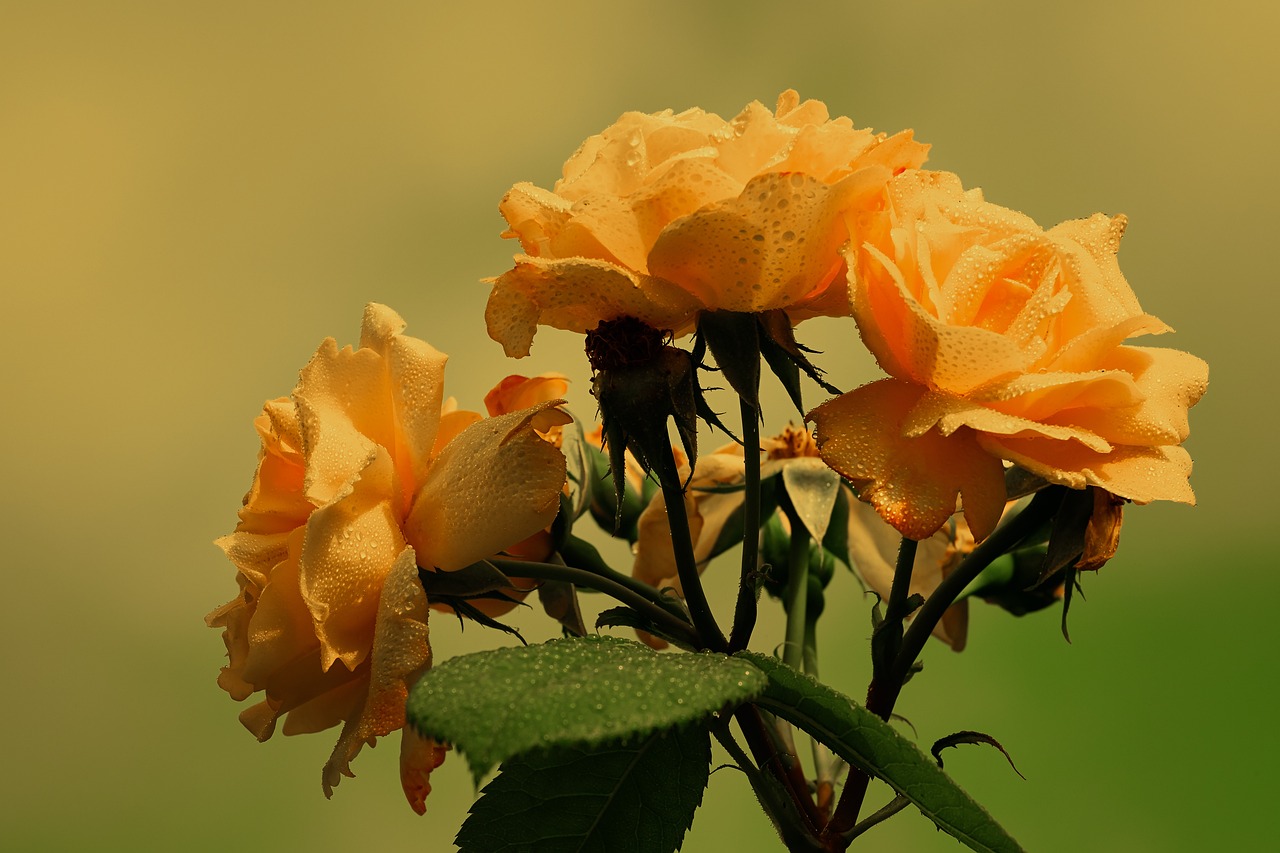
Pruning for Health and Shape
When it comes to nurturing a flourishing rose garden, pruning is an essential practice that cannot be overlooked. Think of pruning as giving your roses a well-deserved haircut. Just like we trim our hair to keep it healthy and stylish, roses need regular pruning to promote robust growth and stunning blooms. But when is the best time to wield those pruning shears? Typically, late winter to early spring is ideal, just before the buds begin to swell. This timing ensures that your roses will bounce back with vigor as they enter their growing season.
Now, let's dive into the nitty-gritty of pruning techniques. There are various methods, each serving a unique purpose. For instance, deadheading is a technique used to remove spent flowers, which not only improves the plant's appearance but also encourages further blooming. Meanwhile, thinning involves cutting back some stems to allow better air circulation and sunlight penetration, which is crucial for preventing diseases. Lastly, shaping your roses helps maintain their desired form, ensuring they look their best in your garden. Each of these techniques contributes to the overall health and aesthetics of your plants.
It's also vital to use the right tools for the job. A good pair of pruning shears, preferably sharp and clean, can make all the difference. If you're dealing with thicker branches, consider using loppers or even a pruning saw for larger stems. Here’s a quick reference table for your pruning toolkit:
| Tool | Use |
|---|---|
| Pruning Shears | For small to medium stems |
| Loppers | For thicker branches |
| Pruning Saw | For large, woody stems |
| Gloves | For protection against thorns |
Remember, pruning isn’t just about cutting back; it's about understanding your plants and their needs. As you prune, keep an eye out for any signs of disease or damage. If you notice any dead or diseased wood, be sure to remove it promptly to prevent further issues. It’s like giving your roses a fresh start, allowing them to channel their energy into healthy growth instead of struggling with unhealthy parts.
In conclusion, pruning is more than just a chore; it’s an art form that requires a bit of knowledge and a lot of love. By mastering the techniques of pruning, you not only enhance the beauty of your roses but also contribute to their overall health. So, grab those shears, and let’s get to work on shaping a vibrant and thriving rose garden!
- When is the best time to prune roses? Late winter to early spring, before new growth begins.
- What tools do I need for pruning? A good pair of pruning shears, loppers for thicker branches, and gloves for protection.
- How often should I prune my roses? Generally, once a year is sufficient, but you can deadhead throughout the blooming season.
- What should I do with the clippings? You can compost healthy clippings or dispose of diseased material to prevent spreading.

Types of Pruning
When it comes to nurturing your rose garden, understanding the is essential. Pruning is not just about snipping away at branches; it's a vital practice that promotes healthy growth, enhances blooms, and shapes your plants to look their best. There are several key types of pruning that every rose gardener should know:
1. Deadheading: This is the process of removing spent flowers from your rose plants. By cutting off faded blooms, you encourage the plant to produce more flowers instead of focusing energy on seed production. Think of it like giving your roses a gentle nudge to keep blooming. To deadhead, simply cut the stem just above the first set of healthy leaves. This technique not only keeps your garden looking tidy but also prolongs the blooming season.
2. Thinning: Over time, rose bushes can become overcrowded, leading to poor air circulation and increased susceptibility to diseases. Thinning involves selectively removing some branches to allow for better light penetration and airflow. This is particularly important for hybrid tea roses, which can become dense. When thinning, aim to remove any weak or crossing branches, allowing the stronger ones to thrive.
3. Shaping: This type of pruning is all about aesthetics. By shaping your roses, you can create a more visually appealing structure. Whether you want a rounded bush or a more upright form, shaping helps guide the growth of your plants. Start by removing any dead or damaged wood, then step back and assess the overall shape. Prune back any overly long stems to achieve your desired look.
It’s important to note that the timing of these pruning techniques can vary based on the type of rose and your local climate. For most roses, the best time to prune is in early spring, just as the buds begin to swell. However, some varieties, like climbing roses, may require different timing. Always keep an eye on your plants and adjust your pruning schedule accordingly.
In conclusion, mastering the different types of pruning will not only enhance the health of your roses but will also elevate the beauty of your garden. Remember, each cut you make is a step towards a more vibrant and flourishing rose bush. So grab your pruning shears and get started—your roses will thank you!
- When is the best time to prune roses? The ideal time to prune roses is in early spring, just before new growth begins.
- How much should I prune my roses? Generally, aim to remove about one-third of the plant, but this can vary based on the type of rose and its condition.
- Can I prune my roses in the fall? It's not recommended to heavily prune roses in the fall, as this can encourage new growth that may not survive winter.
- What tools do I need for pruning? Essential tools include sharp pruning shears, loppers for thicker branches, and gloves to protect your hands.
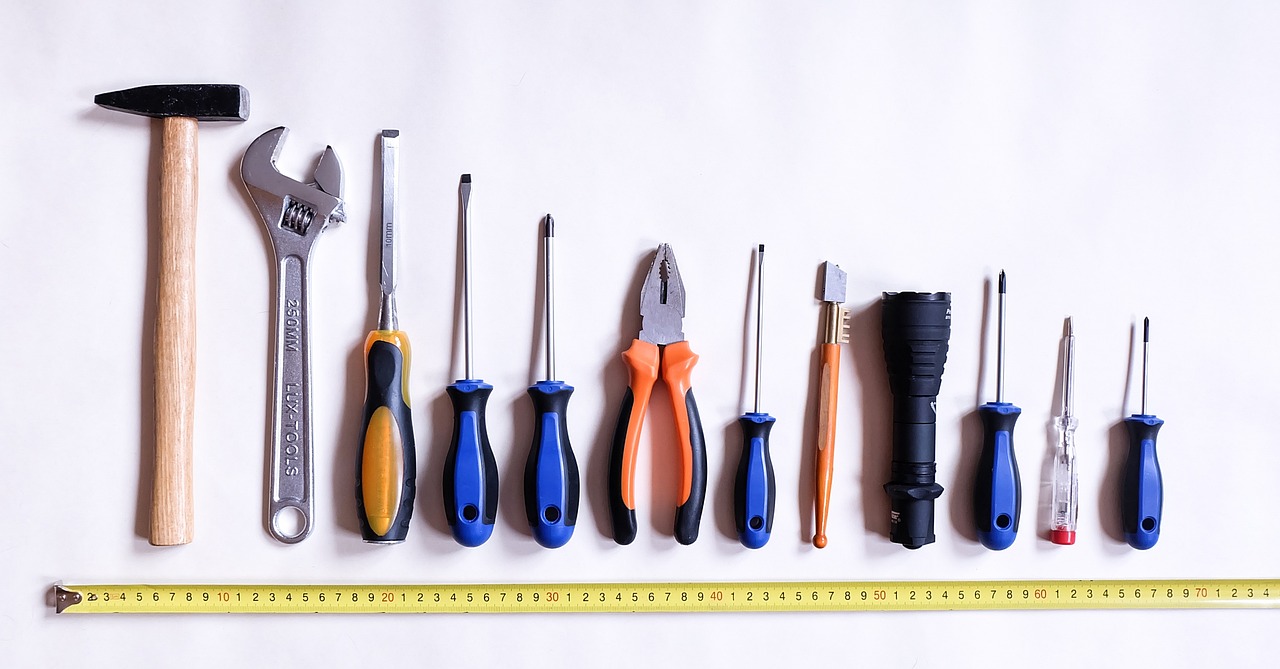
Tools for Pruning
When it comes to pruning your roses, having the right tools in your gardening arsenal can make all the difference between a chore and a pleasure. Imagine trying to sculpt a masterpiece with a dull chisel; similarly, attempting to prune your roses with inadequate tools can lead to jagged cuts, damaged stems, and ultimately, unhealthy plants. So, let’s dive into the essential tools you’ll need to keep your rose garden thriving.
First and foremost, a good pair of pruning shears is a must-have. These are your primary tools for cutting back stems and branches. Opt for bypass pruners, which have two blades that slide past each other, creating a clean cut that promotes healing. This is crucial for roses, as clean cuts help reduce the risk of disease. Make sure to choose a pair that feels comfortable in your hand and can easily tackle the thickness of your rose stems.
In addition to pruning shears, a lopper is essential for those thicker branches that your shears simply can’t handle. Loppers have long handles that provide leverage, allowing you to cut through branches up to two inches in diameter with ease. Think of them as the heavy-duty tool for when your roses are feeling a bit too wild and unruly!
Another tool that often gets overlooked is a hand saw. While it may seem excessive, a small hand saw can be invaluable for larger, older rose bushes that have developed thick, woody stems. It’s like having a secret weapon in your gardening toolkit! Just remember to use it sparingly, as roses thrive best with regular maintenance rather than drastic cuts.
Don’t forget about gloves! Protecting your hands from thorns and rough stems is vital. Look for gloves that are both sturdy and flexible, allowing you to maintain dexterity while keeping your hands safe. You wouldn’t want to ruin your gardening day with a thorn prick, would you?
Lastly, a garden fork and a trowel can also come in handy when preparing your roses for pruning. Use the fork to aerate the soil around the base of your plants and the trowel to remove any dead material or weeds that could hinder growth. These tools help create a healthy environment for your roses to flourish.
In summary, the right tools can transform your pruning experience from a daunting task into a rewarding endeavor. Make sure to invest in high-quality pruning shears, loppers, a hand saw, and protective gloves, and don’t underestimate the importance of soil preparation tools. With these essentials in hand, you’ll be well on your way to shaping your rose garden into a stunning display of blooms!
Q: How often should I prune my roses?
A: It’s generally recommended to prune your roses in early spring before the new growth begins. However, light deadheading can be done throughout the blooming season to encourage more flowers.
Q: What should I do with the cuttings?
A: You can compost the cuttings or use them as mulch around your roses to help retain moisture and suppress weeds. Just make sure to remove any diseased material to prevent spreading issues.
Q: Can I use regular scissors for pruning?
A: While you can use regular scissors, they are not ideal for pruning roses. Pruning shears are specifically designed to make clean cuts, which are essential for plant health.
Q: How do I clean my pruning tools?
A: After each use, it’s a good idea to clean your tools with a solution of one part bleach to nine parts water to prevent the spread of disease. Make sure to dry them thoroughly before storing.
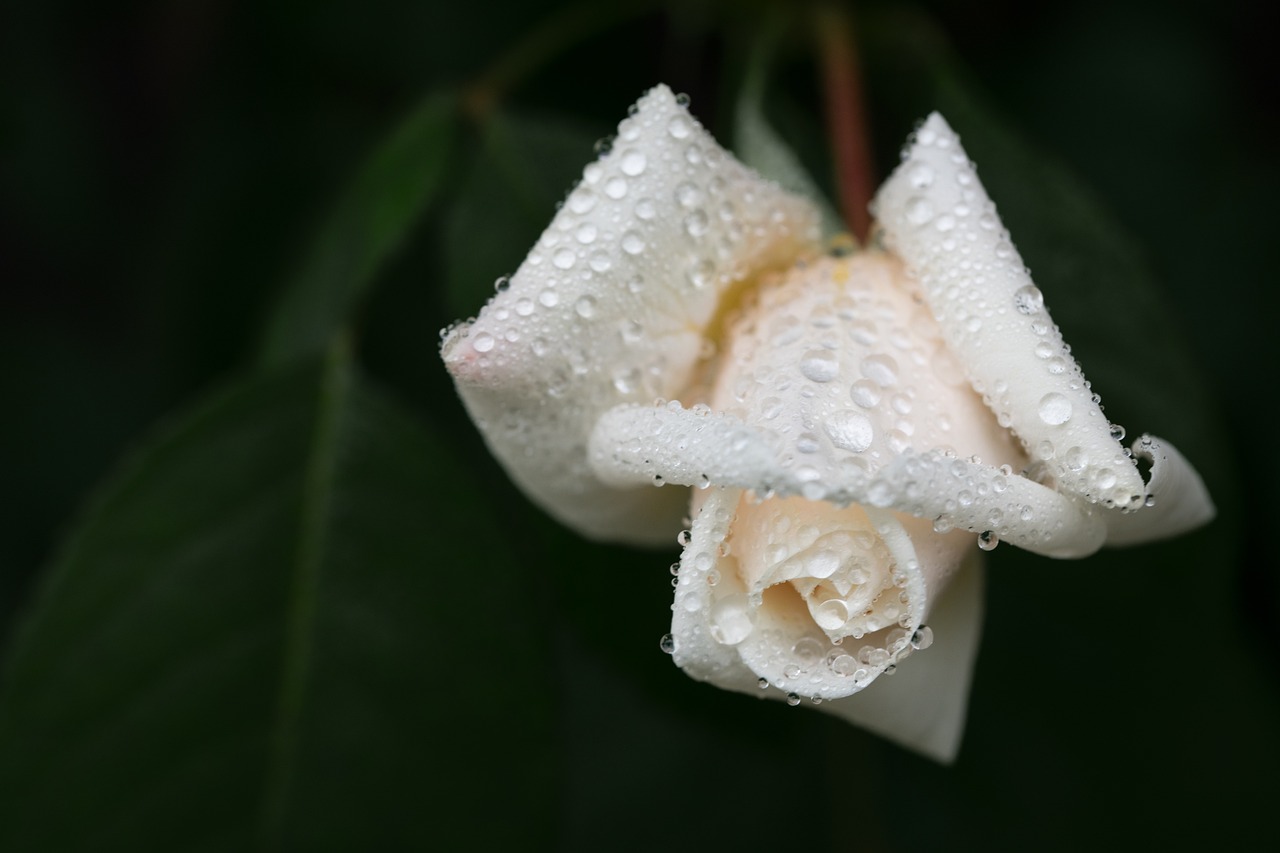
Pest and Disease Management
When it comes to cultivating a stunning rose garden, is a crucial piece of the puzzle. Roses, while beautiful, can be susceptible to various pests and diseases that threaten their health and vibrancy. The first step in effective management is to understand the common threats your roses may face. From aphids to black spots, recognizing these issues early can save your plants from potential devastation.
One of the most common pests that plague rose gardens is the aphid. These tiny insects can multiply rapidly, sucking the sap from your roses and leading to wilting and yellowing leaves. Another notorious pest is the Japanese beetle, which not only feeds on the foliage but also lays eggs in the soil, leading to grubs that damage roots. Additionally, spider mites can cause significant damage, especially during dry spells, by creating webs and causing leaves to appear speckled and unhealthy.
To effectively manage these pests, it's important to implement a combination of preventive measures and reactive strategies. Regularly inspecting your plants can help you catch infestations early. If you notice any signs of trouble, such as discolored leaves or visible insects, act quickly. You might consider introducing beneficial insects, such as ladybugs, which naturally prey on aphids. Alternatively, homemade remedies like a mixture of water and dish soap can be sprayed on affected plants to deter pests without harming your roses.
In addition to pests, diseases can also wreak havoc on your rose garden. Black spot is a fungal disease that manifests as dark spots on leaves, leading to premature leaf drop. Another common issue is powdery mildew, which appears as a white powdery substance on leaves and stems, often thriving in humid conditions. To combat these diseases, maintaining good air circulation around your roses is essential. This can be achieved through proper spacing and pruning, allowing sunlight to reach all parts of the plant.
For those who prefer a more organic approach, consider using natural fungicides made from baking soda or neem oil. These options can help control fungal infections without the use of harsh chemicals. Remember, the key to successful pest and disease management lies in prevention. Keeping your roses healthy through proper watering, fertilization, and pruning will make them more resilient against these threats.
To summarize the critical aspects of pest and disease management, here’s a quick table outlining the common pests and diseases along with their symptoms and solutions:
| Threat | Symptoms | Solutions |
|---|---|---|
| Aphids | Wilting leaves, yellowing foliage | Introduce ladybugs, use soapy water spray |
| Japanese Beetles | Chewed leaves, presence of grubs | Handpicking, insecticidal soap |
| Black Spot | Dark spots on leaves, leaf drop | Improve air circulation, use natural fungicides |
| Powdery Mildew | White powdery coating on leaves | Neem oil, baking soda solution |
In conclusion, managing pests and diseases in your rose garden is not just about reacting when problems arise; it’s about creating a healthy environment for your roses to thrive. By understanding the common threats, implementing preventive measures, and knowing how to respond to issues, you can enjoy a flourishing garden filled with beautiful blooms.
Q: How often should I check my roses for pests?
A: It's best to inspect your roses at least once a week, especially during the growing season. Early detection can prevent major infestations.
Q: Can I use chemical pesticides on my roses?
A: While chemical pesticides can be effective, they may harm beneficial insects. Consider organic options or targeted treatments instead.
Q: What should I do if I find fungal diseases on my roses?
A: Remove affected leaves immediately and improve air circulation. Use natural fungicides as a preventive measure.
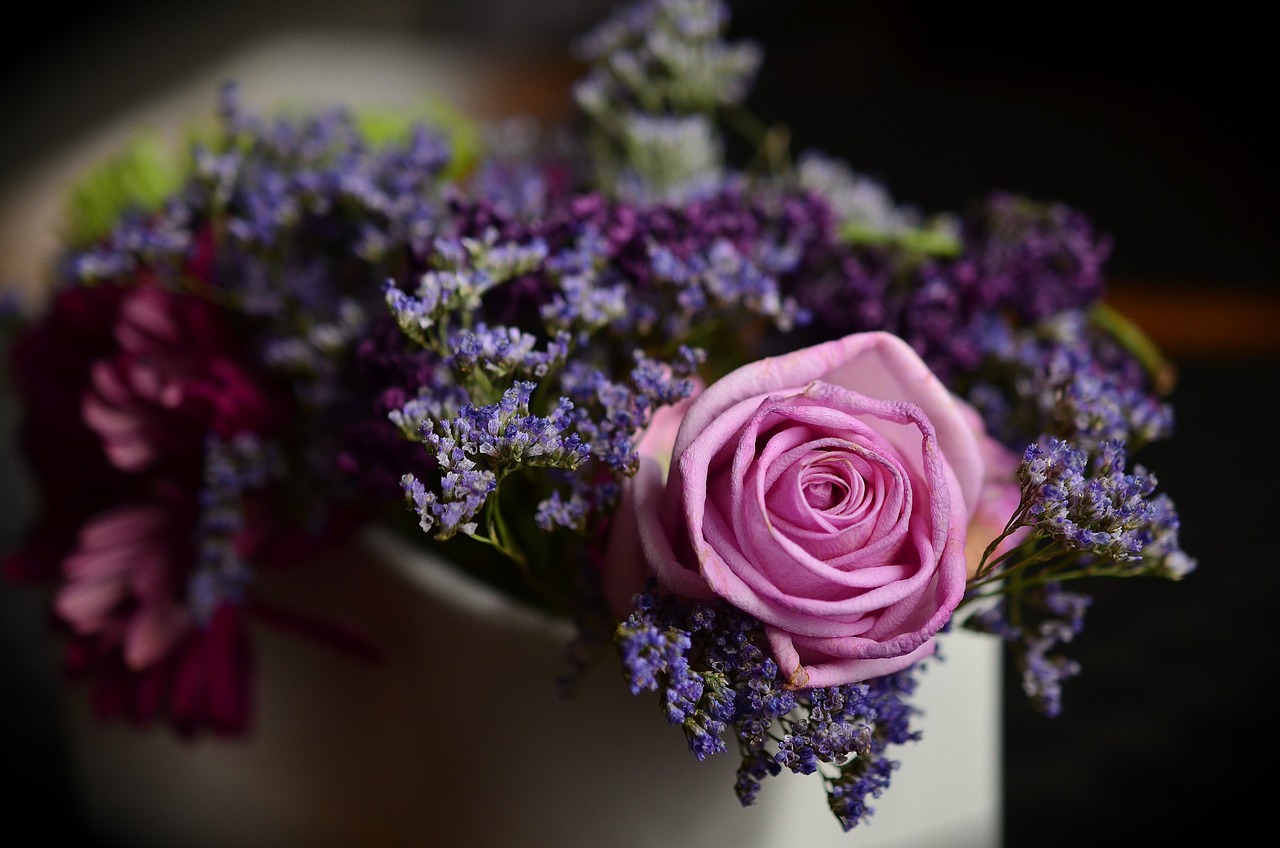
Identifying Common Pests
When it comes to nurturing a thriving rose garden, one of the biggest challenges you'll face is dealing with pests. These little invaders can wreak havoc on your beautiful blooms if you don't catch them early. So, how do you identify the common pests that might be lurking in your garden? Let’s dive into the world of rose pests and arm you with the knowledge you need to keep your garden healthy and vibrant.
First up, aphids. These tiny, soft-bodied insects come in a variety of colors, including green, black, and yellow. They tend to cluster on the undersides of leaves and can cause leaves to curl and distort. If you notice sticky residue on your plants, often referred to as honeydew, it's a telltale sign that aphids are present. Not only do they damage the plant by sucking out the sap, but they can also transmit diseases.
Next, we have the notorious Japanese beetles. These shiny, metallic green and bronze beetles are known for their voracious appetite. They feast on the foliage, leaving behind skeletonized leaves that can make your roses look ragged. If you spot these pests munching away on your plants, it’s essential to act fast before they can do significant damage.
Spider mites are another common foe. These microscopic pests thrive in hot, dry conditions and can be hard to spot with the naked eye. Look for fine webbing on your roses, particularly in the leaf axils. If you notice yellow or speckled leaves, spider mites could be the culprits. They suck the chlorophyll from the leaves, weakening the plant over time.
Then there’s the rose slug, which is actually a type of larva that can severely damage your roses. These pests create holes in the leaves and can be recognized by their slimy, green appearance. If you see your leaves being devoured, you might just have a rose slug infestation on your hands.
Lastly, let’s not forget about whiteflies. These small, white insects resemble tiny moths and can often be found fluttering around your roses. They feed on the sap and can weaken your plants significantly. A sure sign of whiteflies is the yellowing of leaves, which can lead to leaf drop if not managed properly.
To help you identify these pests more easily, here’s a quick reference table:
| Pest | Appearance | Damage |
|---|---|---|
| Aphids | Tiny, soft-bodied, green/black/yellow | Leaf curling, sticky residue (honeydew) |
| Japanese Beetles | Shiny metallic green and bronze | Skeletonized leaves |
| Spider Mites | Microscopic, fine webbing | Yellow or speckled leaves |
| Rose Slugs | Green, slimy larvae | Holes in leaves |
| Whiteflies | Small, white, moth-like | Yellowing leaves, leaf drop |
By keeping an eye out for these common pests and understanding the signs of their presence, you can take proactive steps to protect your roses. Remember, early detection is key! If you catch these pests in their tracks, you can save your beautiful blooms from potential devastation.
- What should I do if I find pests on my roses?
Act quickly! Use natural pest control methods or insecticidal soap to treat the affected areas. Regular inspections can help you catch infestations early. - Can I prevent pests from attacking my roses?
Yes! Keeping your garden healthy through proper watering, fertilization, and pruning can make your roses less attractive to pests. - Are there any beneficial insects that can help?
Absolutely! Ladybugs and lacewings are great allies in the fight against aphids and other pests.
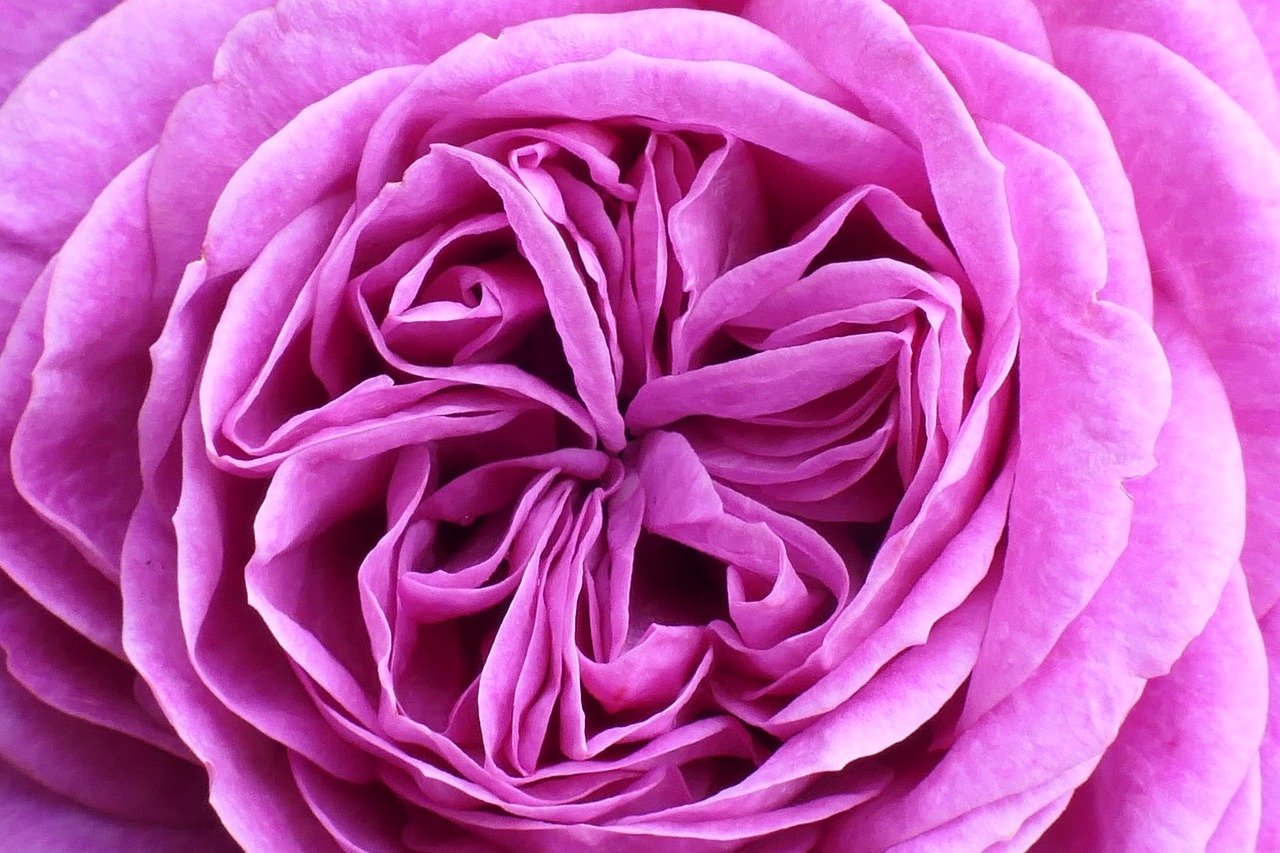
Natural Pest Control Methods
When it comes to keeping your rose garden vibrant and healthy, utilizing can be a game changer. Instead of reaching for harsh chemicals that can harm beneficial insects and the ecosystem, why not consider some eco-friendly alternatives? These methods not only keep your roses safe but also promote a healthier garden environment. After all, nature has provided us with some incredible tools to combat pests!
One of the most effective strategies is to attract beneficial insects that prey on common rose pests. For example, ladybugs are voracious eaters of aphids, while lacewings can help control thrips and mealybugs. To attract these helpful allies, you might consider planting flowers such as marigolds, yarrow, and cosmos nearby. These plants not only add beauty to your garden but also serve as a beacon for beneficial insects.
Another natural approach involves the use of homemade remedies. For instance, a simple mixture of water, dish soap, and vegetable oil can create an effective spray against aphids and spider mites. Just mix one tablespoon of each ingredient into a quart of water, shake it well, and spray it directly onto the affected areas of your roses. It’s amazing how something so simple can pack such a punch!
Additionally, you can consider using diatomaceous earth, a natural powder made from the fossilized remains of tiny aquatic organisms. When sprinkled around your rose plants, it acts as a barrier against soft-bodied pests like slugs and snails. Just be sure to reapply it after rain or watering, as moisture can diminish its effectiveness.
Finally, companion planting can also play a significant role in pest management. By strategically placing certain plants next to your roses, you can deter pests naturally. For example, planting garlic or chives near your roses can help repel aphids, while nasturtiums can act as a trap plant, drawing aphids away from your prized blooms.
In conclusion, embracing natural pest control methods not only protects your roses but also enhances the overall health of your garden. By fostering a balanced ecosystem, you’ll find that your rose garden can thrive without the need for chemical interventions, allowing you to enjoy the beauty of your blooms while being kind to the planet.
- What are the signs of pest infestations on roses? Look for discolored leaves, holes in foliage, or visible pests such as aphids and spider mites.
- How often should I apply natural pest control methods? It depends on the severity of the infestation, but regular monitoring and reapplication every few weeks can help maintain a healthy garden.
- Are natural pest control methods safe for pets and children? Yes, most natural methods are safe for pets and children, making them a great choice for family gardens.

Fertilizing for Optimal Growth
When it comes to cultivating a stunning rose garden, fertilization plays a pivotal role in ensuring your plants remain healthy and vibrant. Just like humans, roses need a balanced diet to flourish, and the right nutrients can make all the difference between a lackluster bloom and a breathtaking display of color. So, how do you go about feeding your roses? Let’s dive into the different types of fertilizers available and the best practices for applying them effectively.
First things first, understanding the nutritional needs of your roses is essential. Roses typically require three primary nutrients: nitrogen, phosphorus, and potassium. Each of these plays a crucial role in the plant's overall health:
- Nitrogen: Promotes lush foliage and overall growth.
- Phosphorus: Essential for root development and flowering.
- Potassium: Enhances disease resistance and overall vigor.
Now, let’s explore the different types of fertilizers you can use:
| Type of Fertilizer | Description | Best Use |
|---|---|---|
| Granular Fertilizer | Slow-release granules that provide nutrients over time. | Ideal for long-term feeding. |
| Liquid Fertilizer | Quickly absorbed by plants, providing immediate nutrients. | Perfect for a quick boost during the growing season. |
| Slow-Release Fertilizer | Releases nutrients gradually, feeding plants over weeks or months. | Great for consistent nutrition without frequent applications. |
Choosing the right fertilizer type for your roses depends on your garden's specific needs and your personal gardening style. If you're looking for a low-maintenance option, granular or slow-release fertilizers might be your best bet, as they require less frequent application. On the other hand, if you’re aiming for rapid growth or recovery, liquid fertilizers can provide that much-needed boost.
Timing is also crucial when it comes to fertilizing your roses. Applying fertilizer at the right moment can significantly enhance the effectiveness of your efforts. Generally, the best times to fertilize are:
- In early spring, just as new growth begins.
- After the first bloom cycle, to encourage a second round of flowers.
- Late summer, to prepare the plants for winter dormancy.
However, be cautious not to over-fertilize, as this can lead to excessive foliage growth at the expense of blooms. A good rule of thumb is to follow the instructions on the fertilizer packaging and observe your plants. If your roses are growing vigorously but not blooming, you might need to adjust your fertilization strategy.
Finally, don’t forget about the importance of water when fertilizing. Watering your roses before and after applying fertilizer helps to activate the nutrients in the soil and prevent any potential root burn. Think of it as giving your roses a nice drink of water before a hearty meal—it sets the stage for a delightful dining experience!
Q: How often should I fertilize my roses?
A: Generally, fertilizing your roses every 4-6 weeks during the growing season is ideal. Adjust based on your specific rose variety and soil conditions.
Q: Can I use compost as a fertilizer?
A: Absolutely! Compost is a fantastic organic option that improves soil quality while providing essential nutrients.
Q: What should I do if my roses aren't blooming?
A: Check your fertilization schedule, ensure proper watering, and consider soil testing to determine if any nutrients are lacking.
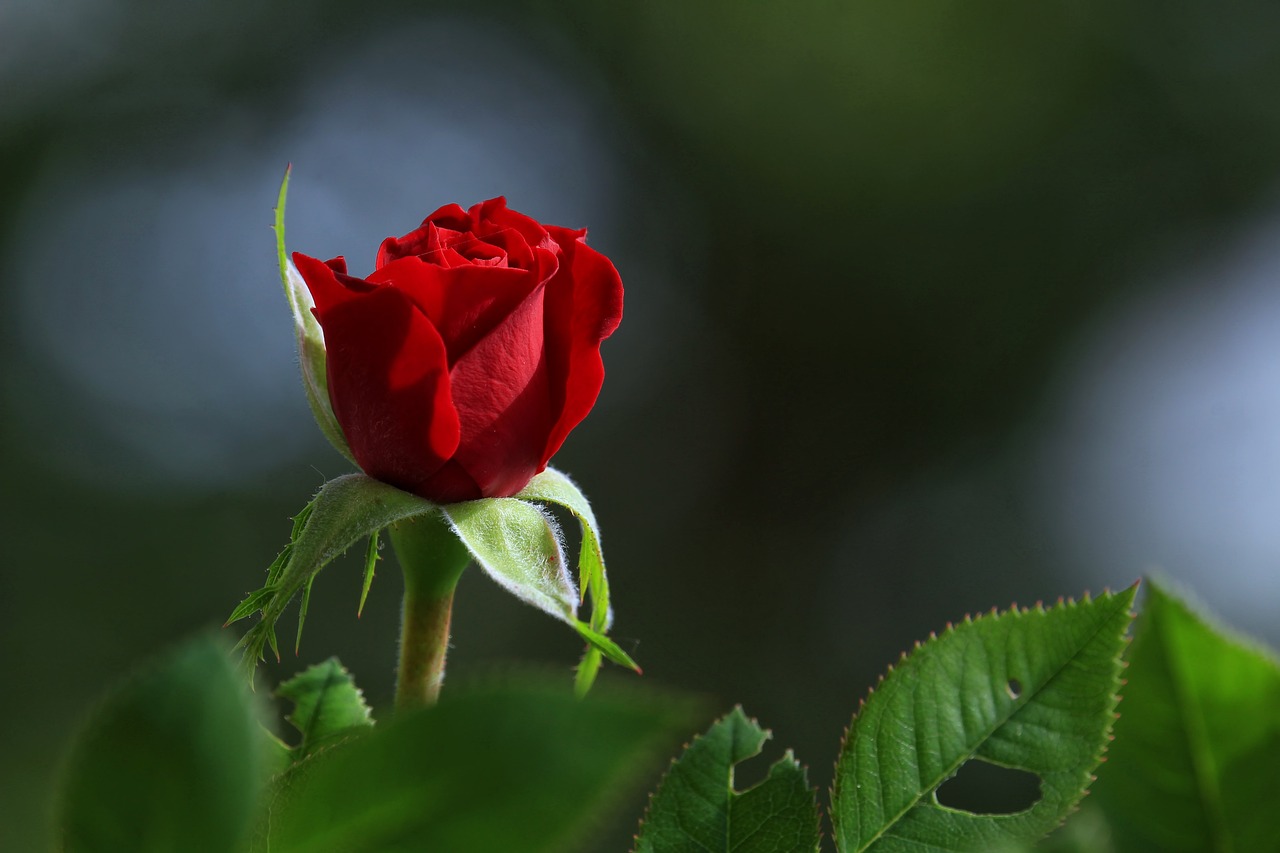
Types of Fertilizers
When it comes to nurturing your rose garden, understanding the available is essential for ensuring your plants thrive. Different fertilizers cater to various needs, and selecting the right one can make all the difference in the health and vibrancy of your roses. Essentially, fertilizers can be categorized into three main types: granular, liquid, and slow-release.
Granular fertilizers are among the most common choices for rose gardeners. They come in dry form and can be easily spread around the base of your plants. The beauty of granular fertilizers lies in their long-lasting effects; they gradually release nutrients over time, providing a steady supply to your roses. However, it’s crucial to apply them correctly, as over-application can lead to nutrient burn. Always follow the recommended guidelines on the package to avoid any mishaps.
On the other hand, liquid fertilizers are fantastic for quick nutrient absorption. They are typically diluted in water and applied directly to the soil or foliage. This method is particularly beneficial during the growing season when your roses are actively seeking nutrients. Liquid fertilizers are also ideal for addressing specific deficiencies, as you can tailor your application based on the plant’s immediate needs. Just remember, while they offer rapid results, they require more frequent applications compared to granular options.
Lastly, we have slow-release fertilizers, which are designed to provide a steady supply of nutrients over an extended period. These fertilizers are coated in a special material that controls the release of nutrients based on temperature and moisture levels. This means you won’t have to worry about frequent applications, making them a convenient choice for busy gardeners. However, it’s important to note that they may take a bit longer to show results compared to liquid fertilizers, so patience is key.
To summarize the differences, here’s a quick comparison table:
| Type of Fertilizer | Form | Release Time | Application Frequency |
|---|---|---|---|
| Granular | Dry | Slow | Every few weeks |
| Liquid | Liquid | Fast | Weekly or biweekly |
| Slow-release | Granular | Extended | Monthly or as needed |
Choosing the right fertilizer ultimately depends on your specific gardening goals and the unique needs of your roses. Whether you opt for granular for its longevity, liquid for its quick action, or slow-release for its convenience, the key is to monitor your plants' health and adjust your feeding regimen accordingly. A well-fertilized rose garden not only looks stunning but also stands resilient against pests and diseases, paving the way for a flourishing landscape.
- How often should I fertilize my roses? It depends on the type of fertilizer used. Granular fertilizers can be applied every few weeks, while liquid fertilizers may need weekly applications during the growing season.
- Can I use regular garden fertilizer on roses? While some garden fertilizers can work, it's best to use ones specifically formulated for roses to ensure they meet the unique nutritional needs of these plants.
- What signs indicate my roses need fertilization? Yellowing leaves, stunted growth, and fewer blooms are common signs that your roses may benefit from additional nutrients.
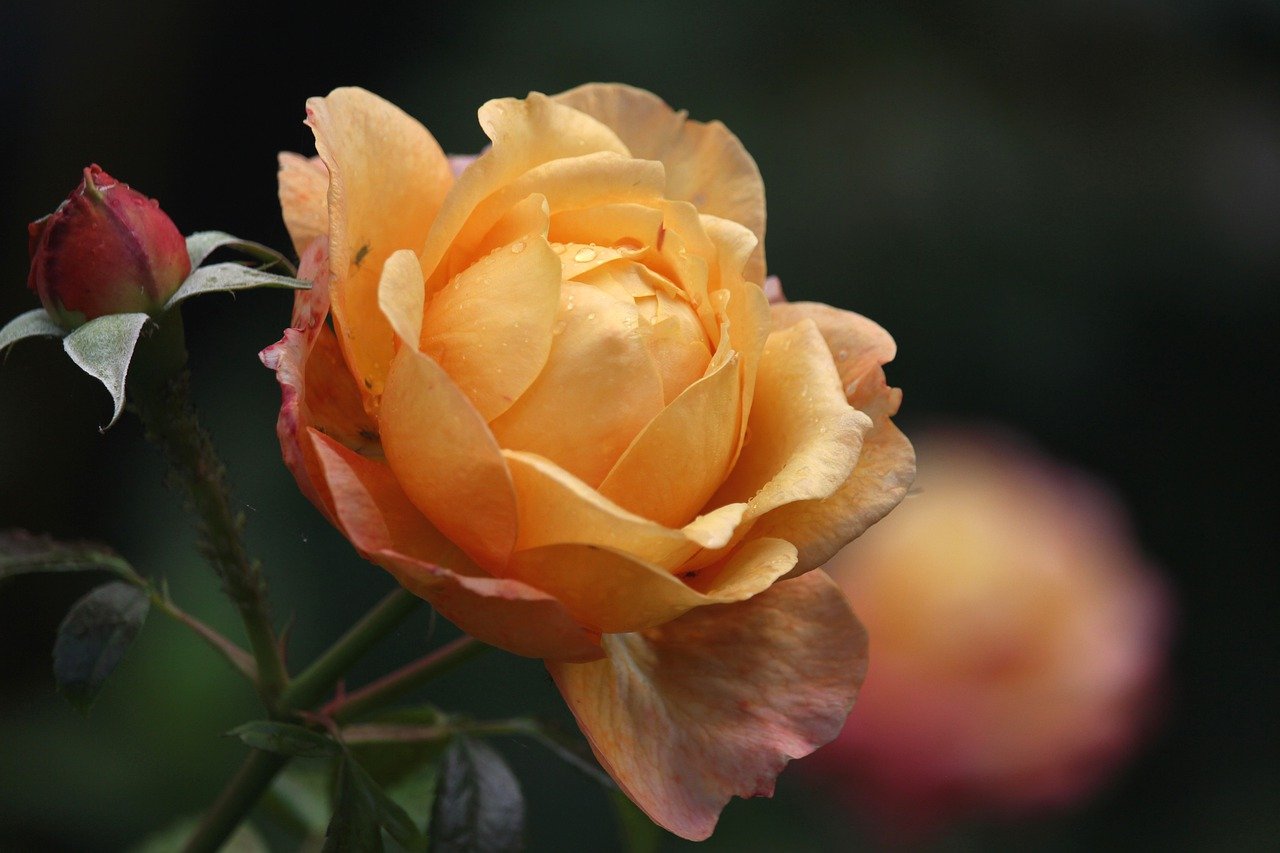
Application Timing
Explore the essential tips and techniques for cultivating a thriving rose garden, including soil preparation, watering, pruning, and pest management, to ensure your roses bloom beautifully and remain healthy.
Selecting the appropriate rose varieties for your garden is crucial. Consider factors such as climate, soil type, and desired aesthetics to create a vibrant and harmonious rose garden.
Healthy roses start with well-prepared soil. Learn how to amend and enrich your soil to provide the perfect foundation for strong root systems and vibrant blooms.
Understanding your soil's pH is essential for rose health. Discover how to test pH levels and make necessary adjustments to create an optimal growing environment.
Incorporating organic matter into your soil improves fertility and drainage. Explore various options, such as compost and well-rotted manure, to enhance soil quality for your roses.
Proper drainage is vital to prevent root rot. Learn effective drainage solutions to ensure your rose plants thrive in well-aerated soil.
Watering is a critical aspect of rose care. Understand the best practices for watering frequency and methods to keep your roses hydrated without overwatering.
Pruning is essential for maintaining the health and shape of your rose plants. Discover the best times and techniques for effective pruning to promote growth and blooming.
Different types of pruning serve various purposes. Learn about deadheading, thinning, and shaping to enhance the overall appearance and health of your roses.
Using the right tools makes pruning easier and more effective. Familiarize yourself with essential pruning tools and their proper usage for optimal results.
Preventing and managing pests and diseases is crucial for a successful rose garden. Explore common threats and effective strategies for keeping your roses healthy and vibrant.
Recognizing common pests is the first step in effective management. Learn how to identify pests that commonly affect roses and their impact on plant health.
Explore natural and organic pest control methods to protect your roses without harmful chemicals. Discover beneficial insects and homemade remedies to keep pests at bay.
Proper fertilization supports healthy growth and vibrant blooms. Understand the types of fertilizers available and how to apply them effectively for your roses.
Different fertilizers serve different purposes. Learn about granular, liquid, and slow-release options to choose the right type for your rose garden.
Timing is everything when it comes to fertilizing your roses. Applying fertilizer at the right moment can make all the difference between a garden that flourishes and one that falters. Typically, the best times to fertilize your roses are in early spring, just before the growing season begins, and again after the first bloom cycle. This ensures that your plants have the nutrients they need when they are most actively growing.
In early spring, as the buds begin to swell, it’s crucial to give your roses a boost. This is when they are waking up from dormancy and need that extra push to start growing strong. A balanced fertilizer with equal parts nitrogen, phosphorus, and potassium will support healthy foliage and root development. After the first bloom, a second application can help promote a second wave of flowers.
However, it’s not just about when you apply fertilizer; it’s also about how you do it. Here are some tips to keep in mind:
- Water Before Fertilizing: Always water your roses before applying fertilizer. This helps prevent root burn and ensures that the nutrients are absorbed effectively.
- Follow the Instructions: Different fertilizers have different application rates and methods. Always read the label and follow the recommended guidelines for the best results.
- Observe Your Roses: Pay attention to your plants. If they seem to be struggling, they may need more frequent applications or a different type of fertilizer.
By mastering the timing and technique of fertilization, you can set your rose garden up for a spectacular show of blooms throughout the season.
- How often should I fertilize my roses? Generally, fertilizing in early spring and after the first bloom is sufficient, but you can adjust based on your roses' specific needs.
- Can I use homemade compost as fertilizer? Yes, homemade compost can be an excellent organic option for fertilizing roses, providing essential nutrients.
- What signs indicate my roses need more fertilizer? Yellowing leaves, stunted growth, and fewer blooms can all be signs that your roses need additional nutrients.
Frequently Asked Questions
- What are the best rose varieties for my garden?
Choosing the right roses depends on your climate, soil type, and what look you want to achieve. For example, if you live in a cooler area, consider hardy varieties like Knock Out Roses or Floribundas. If you’re in a warmer climate, Hybrid Teas or Climbing Roses might be more suitable. Always check local growing guides to find the best match for your garden!
- How do I prepare my soil for planting roses?
Start by testing your soil's pH; roses thrive in slightly acidic to neutral soil (pH 6.0 to 7.0). Amend your soil with organic matter like compost or well-rotted manure to enhance fertility and drainage. Make sure to dig deep enough to allow roots to spread easily. Good soil preparation is like laying a solid foundation for a house—it supports everything that grows above!
- How often should I water my roses?
Watering frequency can vary based on the weather and soil type, but generally, roses need about 1 inch of water per week. It’s best to water deeply but less frequently to encourage deep root growth. Early morning is the ideal time for watering, as it allows leaves to dry during the day, reducing the risk of disease. Think of it as giving your roses a refreshing drink before they start their day!
- When is the best time to prune my roses?
The best time to prune roses is in late winter or early spring, just as the buds begin to swell. This timing encourages new growth and blooming. Remember, pruning is like giving your roses a haircut; it helps them look their best and stay healthy. Focus on removing dead or weak stems and shaping the plant for better air circulation.
- What are some common pests that affect roses?
Roses can be susceptible to pests like aphids, spider mites, and Japanese beetles. Identifying these pests early is crucial for effective management. Regularly inspect your plants, and if you spot any unwelcome guests, act quickly to protect your roses. Think of it as keeping a close eye on your garden's health!
- How can I control pests without using chemicals?
Natural pest control methods can be quite effective. Introduce beneficial insects like ladybugs to your garden, as they feast on aphids. You can also use homemade remedies, such as a mixture of water and dish soap, to deter pests. It's like inviting friends over for a party—just make sure the right guests show up!
- What type of fertilizer should I use for roses?
Roses benefit from a balanced fertilizer that has equal parts nitrogen, phosphorus, and potassium. Options include granular, liquid, and slow-release fertilizers. Each type has its advantages, so choose based on your gardening style. Think of fertilizer as a nutritious meal for your roses—they need the right balance to thrive!
- When should I fertilize my roses for the best results?
The best times to fertilize roses are in early spring, just as new growth begins, and again in mid-summer to support blooming. Avoid fertilizing late in the season, as it can encourage new growth that won’t survive the winter. Timing is everything—just like knowing when to plant your seeds for the best harvest!



















